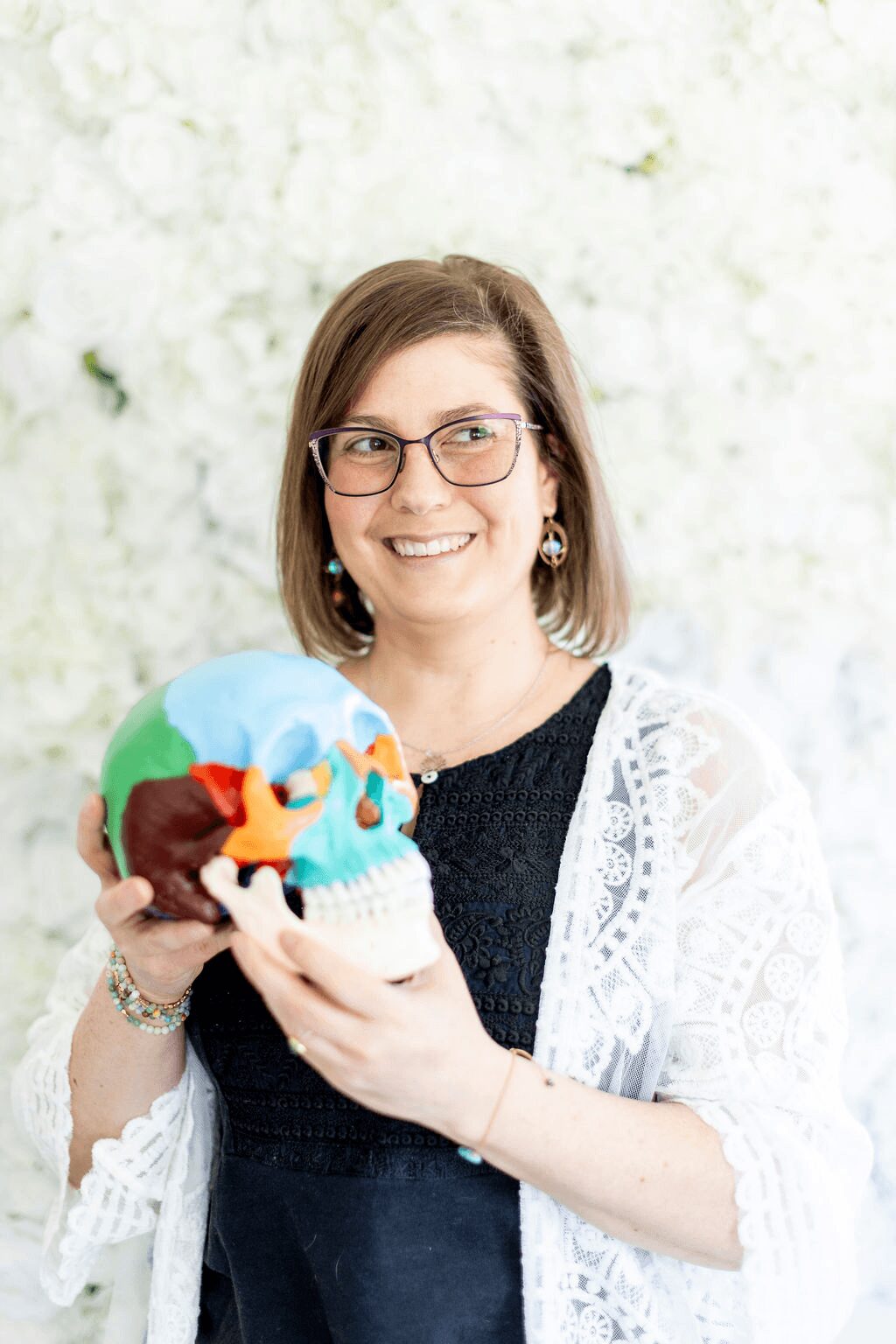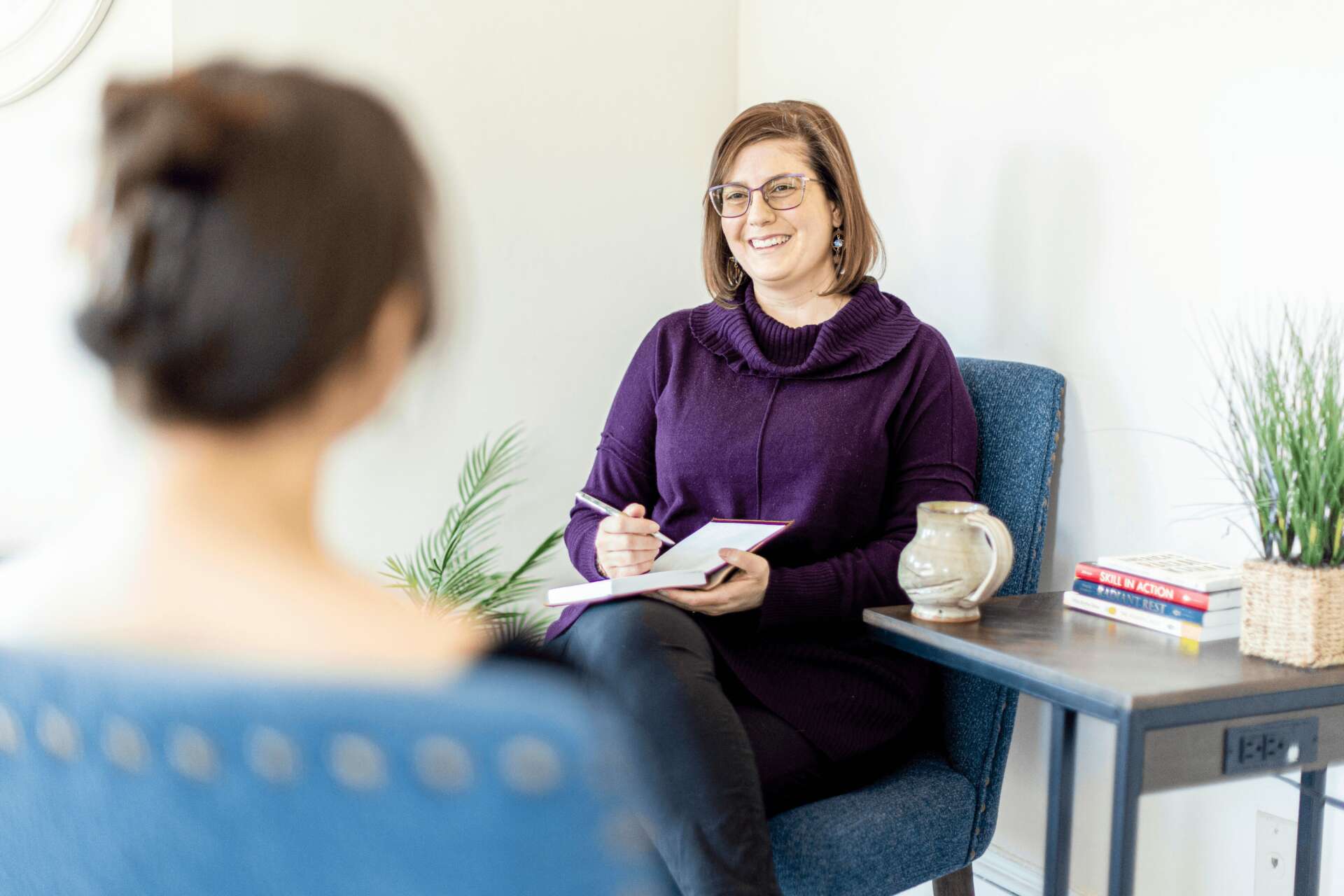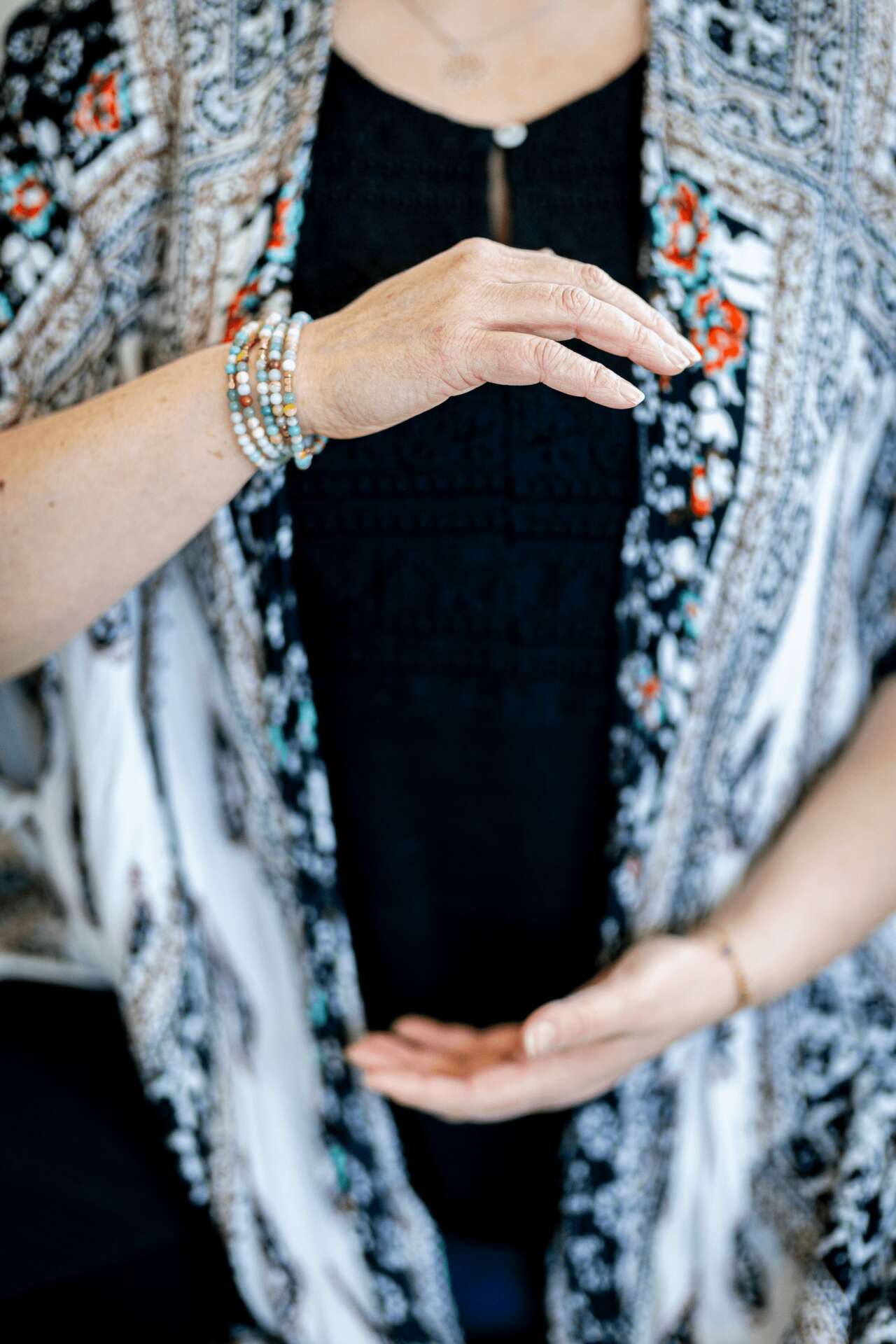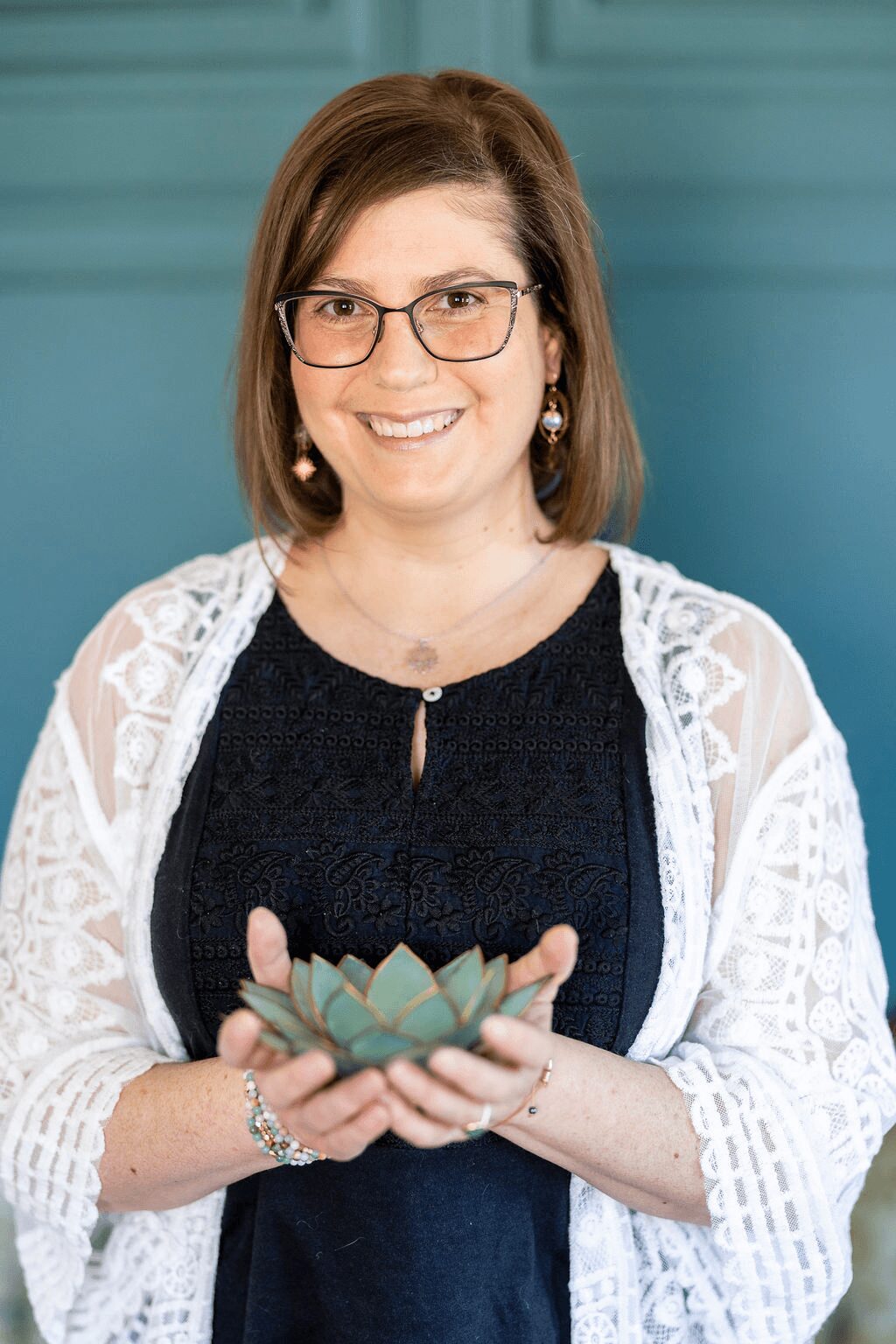We recently connected with Rachel De Simone and have shared our conversation below.
Alright, Rachel thanks for taking the time to share your stories and insights with us today. Was there a defining moment in your professional career? A moment that changed the trajectory of your career?
In my first year practicing physical therapy, a colleague was demonstrating a manual therapy technique on me in a training and used too much force. I ended up with a serious nerve injury in my right arm that led to searing, burning pain from my neck to my fingers and an inability to turn my head to the right or grip with my right hand. It got so bad that I couldn’t write my name with a pen, get dressed by myself, or hold a fork in my right hand.
Unfortunately, there is a poor correlation between findings on a MRI and pain. The reason for this is because pain is actually the nervous system’s response to perceived threat, and not simply the result of tissue damage. This means that your MRI could show tissue damage when you don’t have pain, and you can have a lot of pain without any clear damage visible on an MRI. This is exactly what happened to me: The MRI of my neck didn’t show any damage, and so despite very real, life-changing symptoms, the neurosurgeon told me I was fine (I wasn’t) and sent me on my way.
This experience completely changed the trajectory of my career. It helped me to understand pain as the nervous system’s reaction to threat, and gave me an inside look into how frustrating it can be to navigate a medical system that doesn’t really understand pain. It motivated me to understand pain inside and out so that I could be the kind of provider for my patients that I needed when I was struggling.
It took years to unlock the mystery of that injury, leading me to study ancient and modern approaches to healing in an effort to heal myself. What I learned through my own journey through chronic pain is that healing isn’t linear, and to heal pain, we have to address the root causes, not just the symptoms. Pain is an alarm to warn you about potential danger. The brain on pain can become incredibly sensitive, and the longer you have pain, the easier it is to trip the pain alarm. To heal the root causes of pain, we have to heal the nervous system so that the body no longer feels it is in danger.
Rather than look at pain as a problem that needs to be suppressed, I now see pain as a way for the body to communicate, and believe that being in right relationship with ourselves enables us to respond to those messages with care and compassion. Even though it was an incredibly difficult and painful experience, I am grateful for my pain because it helped me learn how to honor my body’s wisdom and radically transformed my clinical practice.


As always, we appreciate you sharing your insights and we’ve got a few more questions for you, but before we get to all of that can you take a minute to introduce yourself and give our readers some of your back background and context?
I am an Integrative Physical Therapist who helps people with chronic pain and autoimmune conditions heal their nervous systems and restore their vitality. I see pain as a message from our nervous system meant to protect us from danger. Too often, we override the warning signals our bodies are sending, which causes the alarm to get louder and louder until we can’t ignore it anymore. I teach people how to connect to their body’s wisdom and address the root causes of their symptoms so their nervous system feels safe.
I love working with people with mysterious, persistent pain. This includes people who:
– Have a lot of pain, but no significant findings on an MRI or X-Ray.
– Had an injury that healed, but they still have a lot of pain.
– Have pain that keeps coming back every time they get stressed, try to increase their activity, or go back to work.
– Have autoimmune conditions that make their whole bodies hurt.
– Are burned out and exhausted and have pain that seems random because they can’t identify a clear cause or trigger.
I used the word mysterious because most of the people who come to see me don’t understand why they are in pain, and their doctors often don’t understand either, but I don’t think it is a mystery at all. Pain is not just the result of injury. Pain is an alert from the body warning of potential danger.
What part of the body is responsible for responding to danger?
The sympathetic nervous system.
The sympathetic nervous system is the fight, flight, freeze, fawn part of the nervous system. When it is activated, it mobilizes the resources in our bodies so we are ready to defend ourselves. When the sympathetic nervous system is activated, energy is shunted away from inessential functions like digestion and reproduction, and to the periphery of the body so we have the energy we need to kick, hit, run, or yell in self-defense. This is why pain messes up our digestion, hormones, reproductive cycles, sleep, and concentration. It is also why it is so hard to ignore.
When someone has an acute injury, like a broken bone or an ankle sprain, we obviously want to support the tissue so that it can heal. But we don’t just need to treat the injury, we also have to heal the nervous system. This is especially true in persistent, mysterious cases, because there often isn’t any injury to treat.
Here is where I come in. The nervous system needs a few things in order to heal:
– Space
– Blood flow and oxygen
– Movement
– Rest
– Nourishment
– Trust
– Support
– A healthy internal and external environment
I am trained as a physical therapist, but my practice is so much more than physical therapy. When you go to most PT clinics, the PT will test your range of motion and strength, give you some exercises for the body part that hurts, and maybe do a little manual therapy. This is a mechanical approach to treatment, and it works okay in acute cases, but it doesn’t work very well in persistent and mysterious cases.
My approach addresses the context and the root causes, not just the body part. This is especially helpful if your pain isn’t isolated to one body part, or falls into the mysterious category. It is pretty common for folks with persistent pain to have digestive troubles, difficulty sleeping, hormone or endocrine imbalance, brain fog, difficulty concentrating, mood fluctuations, and frequent illness. A lot of doctors treat those things as separate issues, but they aren’t. They are all signs of a nervous system in distress and a body that is having trouble processing what it is experiencing. When I work with people 1:1, we address things like digestion, sleep, energy management, relationships, mood, and stress because all of those symptoms are the body’s way of alerting us to danger and asking for help.
Pain is a GOOD THING. We want our bodies to tell us when there is danger. We also want our nervous system to trust that we will listen when it talks to us. I see my role as one of a guide or a mentor that supports clients in recognizing the healer within themselves and learning how to take control over their symptoms. When I work with clients, I see our work as a collaboration that is rooted in relationship.
Together, we decode the signals your body is sending and get curious as to why your body is sounding the pain alarm.
We create internal and external environments that support healing, and give your nervous system what it needs in order to heal.
We help you understand pain because if we can reduce the fear around the pain, it will help the nervous system relax and actually decrease the pain.
I use a combination of therapeutic yoga, energy healing, craniosacral therapy, Ayurvedic medicine, pain science, and physical therapy to help your nervous system to heal and to treat the mind, body, and spirit holistically so you can break the pain cycle, stop feeling depleted, and restore your vitality. The world needs your unique gifts, and it is my job to help you shine!


What’s a lesson you had to unlearn and what’s the backstory?
Our bodies are incredibly intelligent, and they tell us exactly what we need. The question is, are we paying attention to what our bodies are communicating?
When I was in college, I got sick at the end of every semester. Without fail, I would turn in my last final exam or paper, and I’d crash. It always seemed like it came on fast and without warning, but the truth is, my body was sending me signals for months that I kept ignoring. I pushed through fatigue, and ignored the stress that was building all semester, until eventually my body made me pay attention.
How many times a day do you say yes, when what you really mean is no? How often do you push through fatigue or hunger to get one more thing done? We’ve been conditioned to power through and to mask our symptoms, but symptoms like fatigue, anxiety, or pain, are actually important messages sent by our bodies. What if instead of ignoring them or pushing them away we actually listened to them? Or better yet, what if we invested in our wellness rather than pushing so hard that our bodies break down just to make us take a break?
I’m working on unlearning that habit of powering through, and learning to be grateful for symptoms. When I am tired, I thank my body for reminding me to rest, and I let myself rest. When I am having trouble concentrating, I thank my mind for asking for a break and I respect that request. I don’t want to wait anymore for my symptoms to get too loud to ignore.
As the idiom goes, make time for wellness, or you will be forced to make time for sickness.
I’ve been reflecting on healthcare a lot in the past year, and I think one of the biggest challenges is that we’ve been convinced that we have to look outside of ourselves for the answers. We’ve been told to override our intuition and forsake our traditional medicines in favor of listening to experts and taking prescribed medications. Don’t get me wrong, there is a time and a place for Western medicine and pharmaceuticals. As someone with asthma and an anaphylactic allergy to finfish and shellfish, steroids have saved my life on more than one occasion.
I also know that my health and my ability to heal my own persistent pain shifted when I started to cultivate a deep relationship with myself, align with my natural rhythms, and to honor my body’s wisdom.


Are there any books, videos, essays or other resources that have significantly impacted your management and entrepreneurial thinking and philosophy?
My main influence in life and business is Ayurveda, which forms the framework of my practice and my orientation to life. Ayurveda is one of the world’s oldest systems of medicine still being practiced today. It is based on the idea that everything in the world, including humans, is made up of a unique combination of the five elements: earth, water, fire, wind, and space. Each element has specific qualities and functions which creates a blueprint for who we are as individuals:
– People with a lot of earth and water in their constitution tend to be grounded, loving, supportive, generous people.
– People with a lot of fire in their constitution tend to be smart, focused, disciplined, and inspirational.
– People with a lot of air and space tend to be creative, spontaneous, and open-minded.
Ayurveda has helped me understand my unique constitution so that I know what I need in order to thrive, and I don’t have to guess what my body needs in order to be healthy. The Ayurvedic definition of health is “to be situated in yourself.” When I am situated in myself, I am balanced, my energy is harmonious, and my gifts naturally shine. When I am not situated in myself I can easily become depleted, and then it is harder to ride the waves of life without getting knocked over. This idea forms my orientation to my life and my practice. In order to truly hold space for my clients to heal, I need to be situated in myself. That means that I need time and space to digest my experiences, I need enough rest so that I am present and grounded, and I need enough nourishment and support so that I can be a support for others.
This framework also helps me understand what my clients need in order to heal. When I meet with a patient for an initial consultation, I’m not just evaluating a specific injury, I’m putting together all the puzzle pieces from that client’s healing journey to understand why they feel the way they feel and what they need in order to come back into balance. My intention is to help people know themselves so they know intuitively what they need and don’t need to rely on someone else for the answer.
I wish I could say that there is one magic book that has all the answers, but as far as I know, it hasn’t been written yet! It’s one of my long term goals to write such a book, so stay tuned. For now, you can join my email list at www.lotusvt.com to get access to my weekly newsletter that includes teachings about Ayurveda, pain science, and healing the nervous system!
Contact Info:
- Website: https://www.lotusvt.com
- Instagram: https://www.instagram.com/rachel_lotusvt/
- Facebook: https://www.facebook.com/Rachel.LotusVT
- Linkedin: https://www.linkedin.com/in/rachelmdesimone/
- Soundcloud: https://soundcloud.com/rachel-de-simone


Image Credits
Barbee Hauzinger, Owl’s Iris Photography
Kayla Gray, Kayla Gray Creations


